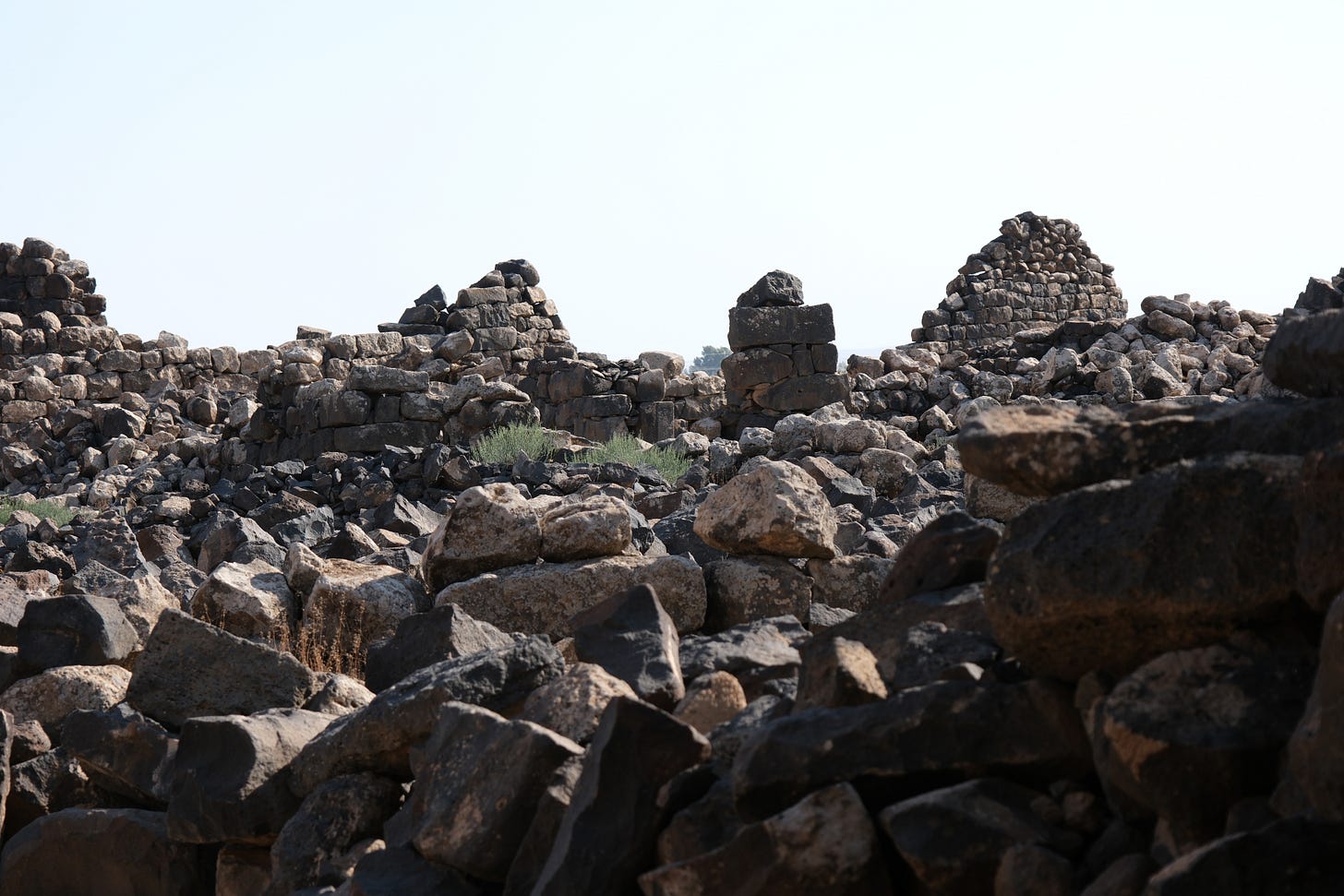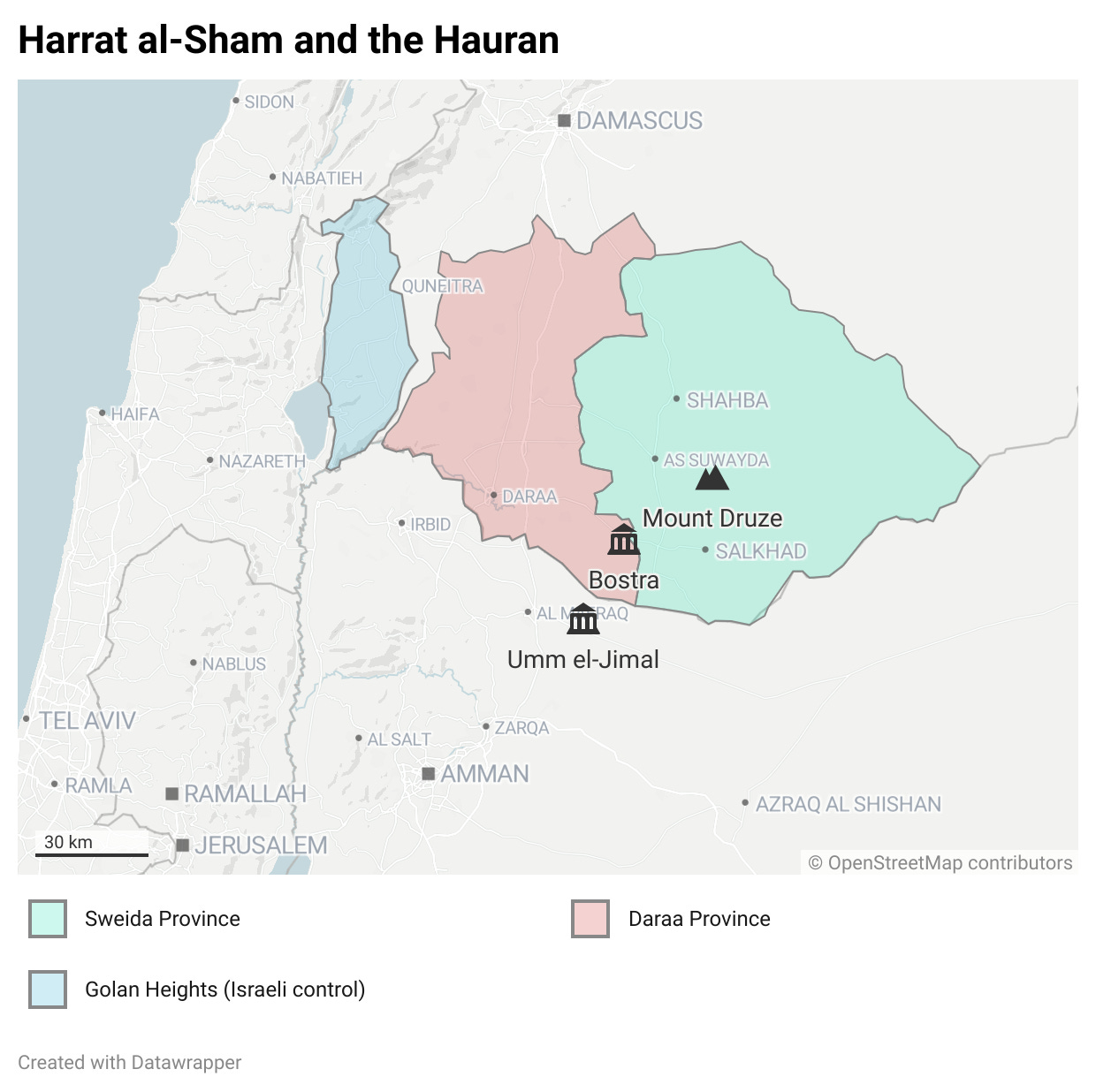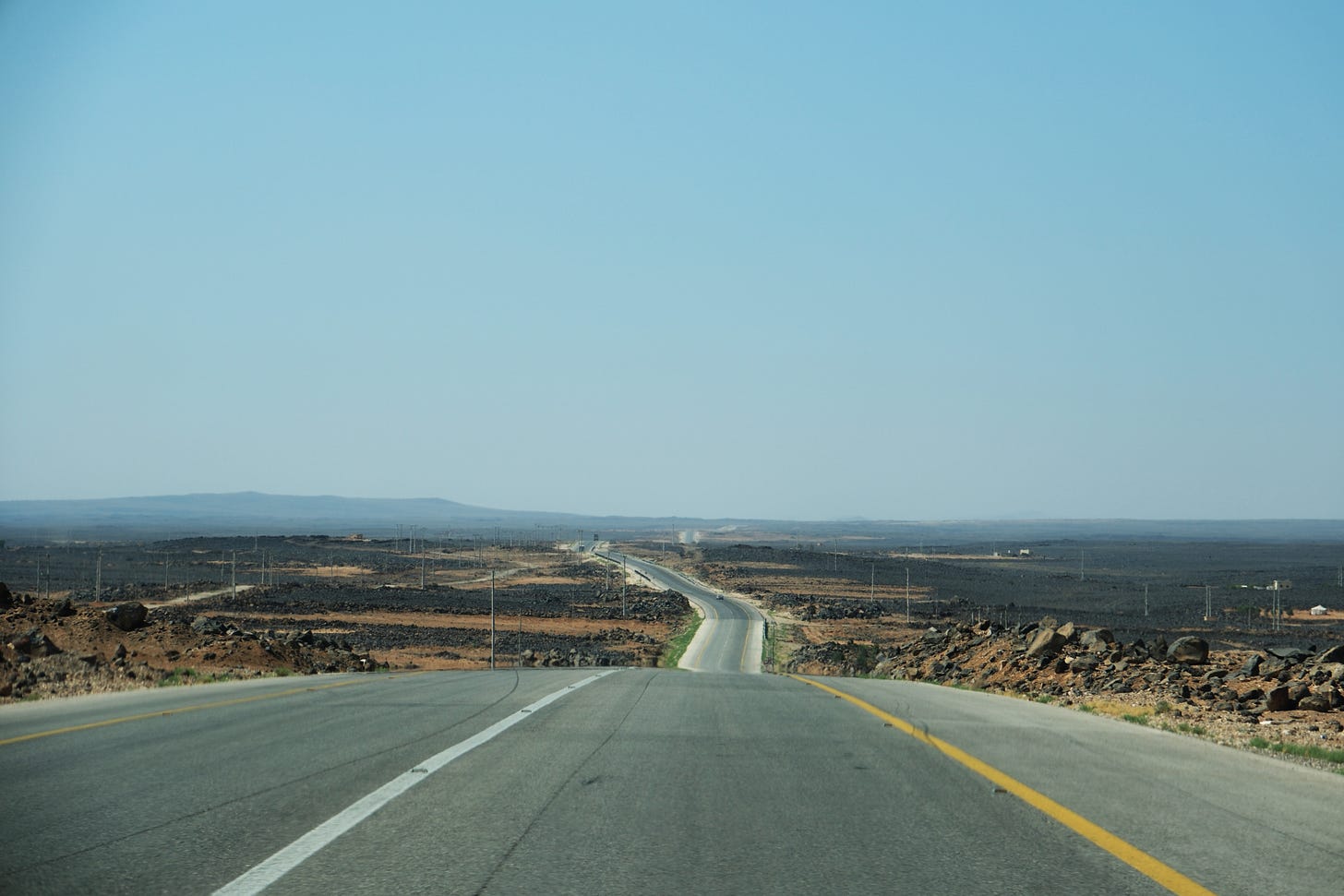At the foothills of Mount Druze
Some notes and illustrations on the geography of a region suffering crisis.
Last week, terrible violence broke out in Sweida Province, Syria. A conflict between local Bedouin and Druze communities drew in the Syrian government and the Israeli army. While there were war crimes on all sides, Bedouin and other pro-government fighters seemed to be particularly vicious towards Druze civilians.
I have nothing original to say about the violence. I have not reported on Druze issues and I do not have contacts in either the city or province of Sweida; everything I know is from either reading the same news as everyone else, or talking to Syrians and Druze outside the region. Instead, I would direct readers to the blog of Aymenn al-Tamimi, who has been reporting on the Syrian civil war for years and now lives in Syria, and New Lines Magazine, which has published quality journalism throughout the crisis.
This post is primarily meant to give people an idea of the geography of the region, often known as Jabal al-Druze or Mount Druze, and its environs. Although I have not been to Sweida myself, I have been to regions of Jordan directly across the border from Mount Druze, the so-called “Black Desert.” Mount Druze is part of a (geologically quite young) volcanic field known as Harrat al-Sham, which has been a historic crossroads between the Levant and the Arabian desert.
My previous writing focused on the Desert Castles, a line of outposts running east to west from the Jordan Valley towards the Azraq Oasis in present-day Jordan. That line is bisected by the Decapolis, ten ancient cities between Damascus and Philadelphia (present-day Amman). One of the most important of them was Bostra بُصْرَىٰ, sitting where Jabal al-Druze hit the Hauran plains. Bostra was incredibly important for both early Christianity and early Islam; the Prophet Muhammad often passed through as a child.
Although most of Bostra is north of the present-day Syrian border, a suburb of Bostra known as Umm el-Jimal ام الجمال sits on the very edge of the Jordanian side. It is an untapped archaeological splendor. The ruin, overlooked by Jordanians and tourists alike, are made of black volcanic basalt and are very well preserved for a city of that age.
Back in the modern day, Israel has tried to present itself as a protector of Druze Syrians, given its own large Druze community and its wariness of the Syrian central government. However, any Israeli plans to intervene on Mount Druze run into a fundamental problem: distance. In between Sweida Province and the Israeli line of control sits Daraa Province, which roughly corresponds to the non-Druze portion of the Hauran.
Israel airdropped aid into Sweida during the present crisis. However, in order to reach Mount Druze in significant numbers, the Israeli army would either have to run supply lines through Daraa Province—with a population that is larger than the entire Syrian Druze community and increasingly hostile to Israeli designs—or somehow gain Jordan’s cooperation to bypass Syria.
Jordan has reportedly been cold on requests to open an unofficial border crossing to Sweida, let alone assist in a foreign military operation there. It’s not hard to see why. Bedouin clans in Jordan have publicly threatened to intervene in Sweida on behalf of their Syrian kin. Beyond the immediate local context, Arab states generally support the new Syrian government and don’t want to be seen as undermining its sovereignty.
And the Jordanian-Syrian border is a sensitive region. Umm el-Jimal, after all, is down the road from both the Zaatari refugee camp and King Hussein Air Base. Jordan began reaching out to the previous Syrian government in late 2022 and early 2023 about border security issues. The Jordanian government wanted help dealing with violent organized crime on the border (particularly drug smuggling gangs) and returning Syrian refugees home. Those interests have not changed with the new government in Syria.
A tenuous ceasefire is now in effect in Sweida. Druze militias have taken control of the city, while the Syrian government has evacuated Bedouin civilians from the province. Hopefully the ceasefire holds, and all sides can resolve the outstanding issues without further bloodshed. And although I know it’s not important in the grand scheme of things, I hope I can visit Bostra in a free, peaceful, and prospering Syria.






